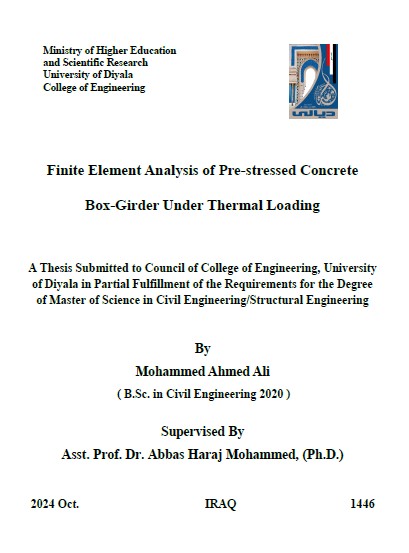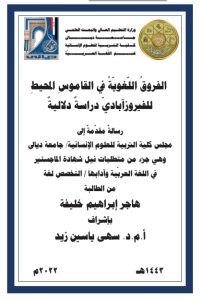ABSTRACT
Box girders are very commonly structural elements used due to their high performance and ability to reduce dead load and number of supports which leads to cost reduction. Therefore, it has become a major requirement to focus on studying the structural behavior of this type of structural element. Although bridges are designed to last for hundred years, they are usually used for much longer periods of time. Thermal effects occur on a daily, seasonal, or annual basis, depending on the environmental conditions. The rise and fall of temperature are the most important factors affecting bridges, as temperature changes are affected by the orientation of the structure, the material, the surface finish layer, the dimensions of the structure, the cross-section geometry, and the performance of bridges may be affected by the nonlinear thermal load resulting from these phenomena.
In this study, a nonlinear finite element model was developed to study the analysis of prestressed concrete box-section bridge girders under the thermal load. Numerical Analysis was performed using ANSYS finite element program and was performed on different concrete box girders selected from the literature. A validation study was conducted to verify the experimental results and compare them with the numerical results.
A parametric study was conducted to investigate the effect of several selected variables on the behavior of prestressed concrete box girders. These parameters contains the effect of thermal location, number of tendons, area of tendons, and initial stress.
The results showed reinforced concrete box girder thathave the minimum reduction in ultimate capacity when thermal load was applied on the top surface of the box girder, with a reduction of (2.0%) compared to the reference girder. Reinforced concrete box girder have the largest reduction in ultimate capacity when thermal load is applied to the sides of the box girder, with a h reduction of (14.2%) compared to the reference girder.
While prestressed concrete box girder have the minimum deflection of (0.84 mm) when thermal load was applied on the bottom flange, Prestressed concrete box girder have the maximum deflection (6.9 mm) when thermal load applied on the top and bottom surface of the box girder.The largest Stress in Z-direction occur in prestressed concrete girder when thermal load is applied to the lower flange, where the maximum stresses in the Z direction are (11.6 MPa).





